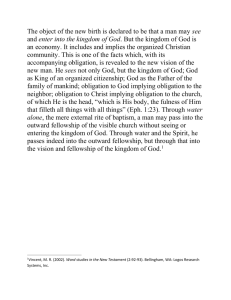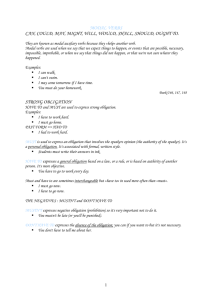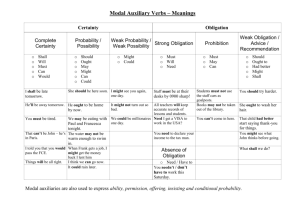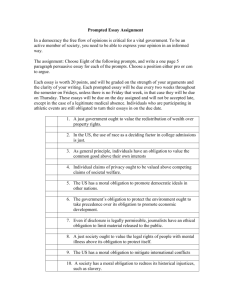Real Rights in Property Law: Study Notes & Case Analysis
advertisement
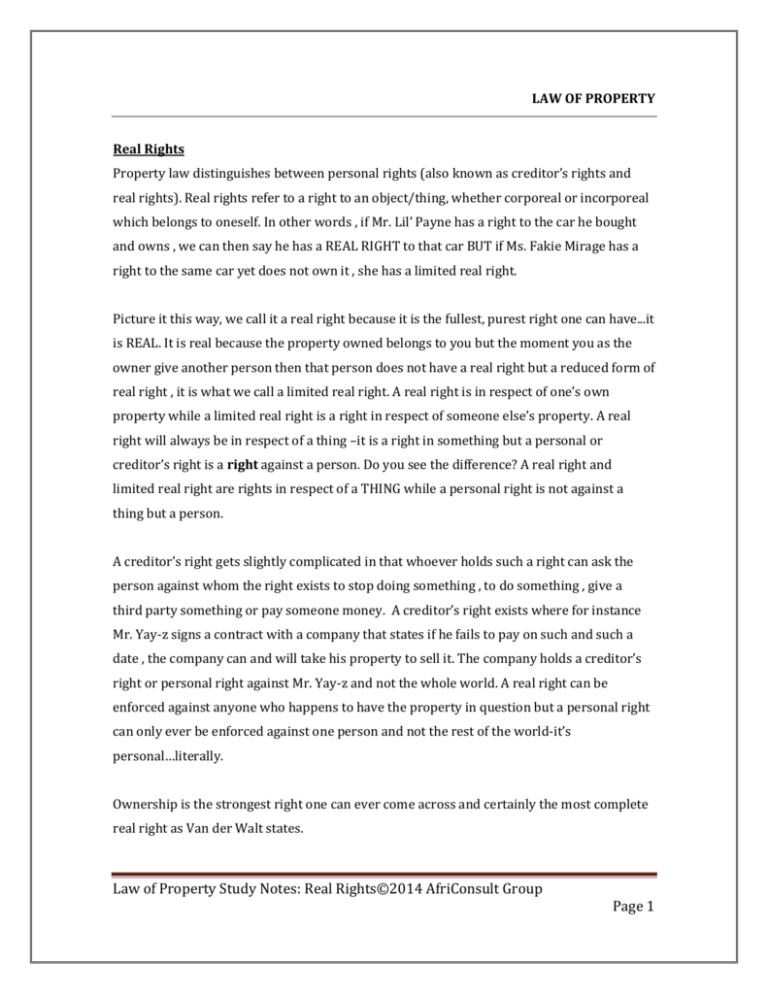
LAW OF PROPERTY Real Rights Property law distinguishes between personal rights (also known as creditor’s rights and real rights). Real rights refer to a right to an object/thing, whether corporeal or incorporeal which belongs to oneself. In other words , if Mr. Lil’ Payne has a right to the car he bought and owns , we can then say he has a REAL RIGHT to that car BUT if Ms. Fakie Mirage has a right to the same car yet does not own it , she has a limited real right. Picture it this way, we call it a real right because it is the fullest, purest right one can have...it is REAL. It is real because the property owned belongs to you but the moment you as the owner give another person then that person does not have a real right but a reduced form of real right , it is what we call a limited real right. A real right is in respect of one’s own property while a limited real right is a right in respect of someone else’s property. A real right will always be in respect of a thing –it is a right in something but a personal or creditor’s right is a right against a person. Do you see the difference? A real right and limited real right are rights in respect of a THING while a personal right is not against a thing but a person. A creditor’s right gets slightly complicated in that whoever holds such a right can ask the person against whom the right exists to stop doing something , to do something , give a third party something or pay someone money. A creditor’s right exists where for instance Mr. Yay-z signs a contract with a company that states if he fails to pay on such and such a date , the company can and will take his property to sell it. The company holds a creditor’s right or personal right against Mr. Yay-z and not the whole world. A real right can be enforced against anyone who happens to have the property in question but a personal right can only ever be enforced against one person and not the rest of the world-it’s personal…literally. Ownership is the strongest right one can ever come across and certainly the most complete real right as Van der Walt states. Law of Property Study Notes: Real Rights©2014 AfriConsult Group Page 1 On the surface this seems pretty simple but the problem becomes the instances in which limited real rights and creditor’s rights seem to overlap. How do we distinguish the two? For instance, if one rents a house in Sandton for two years, what sort of right does that person have? It is not a real right clearly because the person does not own the house, they merely have the right to use, enjoy it for a short time (2 years). Could it be a limited real right according to our definition above in that it is a right in respect of another’s property? Possibly. But could it also be a personal right in that should there be a default in payment, the only person liable is the person renting and not the whole world? That could also be possible but what is the correct answer to this? The common law has two approaches that were discussed theoretically but never really provided much clarity on this issue. A more concrete solution is found in the cases as they discuss the so called subtraction from the dominium test. South African courts have developed another approach albeit a more practical approach to this dilemma and it is coined the ‘subtraction from dominium test’ from the early case of Ex Parte Geldenhuys where it was first used in 1926. Ex Parte Geldenhuys This case deals with a situation where the husband and wife left a portion of land to their children in undivided shares in a will. One of the clauses read that the surviving spouse would have the land divided when the eldest child reached the age of majority. There was however an unusual condition. The property was to be divided using lots(what a way to divide property!) and the child who drew the lot where the house was would have to pay the other children an amount of money as a means of compensating them for their loss of the house( weird obligation). There were two conditions imposed by the will: 1. The subdivision of the land had to be done at a specific time and in a specific manner and 2. That the child with the portion of the house should compensate the others. The logical question that stems from this is what sort of right the children have against the child with the housereal right or creditor’s right. The Registrar of Deeds refused to acknowledge the conditions Law of Property Study Notes: Real Rights©2014 AfriConsult Group Page 2 or register them on the basis that these did not create any real rights because s 63 of the Deeds Registries Act stipulates that only real rights can be registered. The court held that in such a case one must look at what obligation is created by the right and to look at the effect and intention of the obligations. With regards to the effect, the case is proposition for the following which constitute the subtraction from dominium test: Rights are seen as a burden and where this burden rests is how one sees the effect. An obligation that burdens the land is a subtraction from the dominium (another word for ownership) which creates a real right. When we speak of a subtraction from dominium this is what we mean – ownership is a bundle of rights i.e. the right to use, enjoy, destroy, sell etc. and these all come with being the owner. When an obligation affects this bundle of rights for instance by limiting the right to use the land, then we have subtracted from the dominium and a real right is created which affects not just the person who owns the land then but anyone who steps into his position again. It affects owners to come and thus binds them to honor the obligation that comes with it. “take me as I am and love me for who I am” has never found better application than in this case! A burden that rests on a person in their personal capacity creates a personal right which means it cannot be registered. It does not affect or bind future successive owners of the land since them right follows the person. NOTE the importance of the intention of the parties in both elements, the court held that one should consider it. What about when the intention is against the law i.e. the law does not permit such registration, would intention matter? The court held that in respect of the first obligation of limiting the right of subdivision was in fact a burden that attached to future owners and present owners alike meaning that it would bind them in title-thus it was a real right. The second obligation however, placed a burden on only child (the one who drew the lot with the house) and followed that child only. It had no intention to bind anyone else but him and so was seen as personal right. The court then changed the course of our law by stating that because this condition was so closely connected to the first real right, they should be registered together for convenience. So this is an exception to the general rule that only real rights can be registered. If a Law of Property Study Notes: Real Rights©2014 AfriConsult Group Page 3 personal right is too closely connected to a real right the courts will order that it be registered for convenience (smart move court, more work for us!) The Obligation to pay money As you can see, Geldenhuys held that the obligation to pay money in a personal capacity albeit as a once off payment cannot amount to a real right. This is sometimes seen as the default position which sort of, kind of makes sense to think that every time you buy something, you are creating a personal right not a real right. This has not always been followed by the courts. LORENTZ V MELLE Similarly deals with the obligation to pay money but this was created through a contract and registration had taken place. The question before the courts was whether the obligation had been wrongly registered. You must know that this case modifies the subtraction from dominium test in a rather unusual way. The court held that the obligation to pay money was a subtraction from dominium and there was an intention by the parties to establish this subtraction. In other words it found that there was a real right created but it did not subtract from the dominium in the physical use of the land. Note this modification: subtracting from the right to use the land in a physical sense. That modification was not in Geldenhuys and thus is a new development to the test. This makes it more difficult to create limited real rights because now they have to first result in a subtraction from the owner’s right to use the land in a physical sense. The decision was surprisingly confirmed in the Cape Explosive’s case. In terms of the intention aspect, the court seemed to either ignore the importance of the intention or just not pay a lot of attention to it with the result of overturning Geldenhuys in this aspect. Fortunately the Cape Explosive’s case disagreed on this aspect. This judgment is best known for holding that the obligation to pay money can never ever amount to a real right and that it would always be a personal right. Law of Property Study Notes: Real Rights©2014 AfriConsult Group Page 4 PEARLY BEACH TRUST Essentially this is another one of the cases dealing with the obligation to pay money. In this case, the Registrar refused to register is stating that it was a personal right not a real right. This case should best be seen as the ‘return to default’ case which rejected the Lorentz v Melle case and reverted back to the traditional and original Geldenhuys case. It does away with the last or the modified requirement formulated in Lorentz i.e. the right to use land in a physical sense. It takes a bold move by saying that the obligation to pay money could amount to a real right which has attracted much criticism because this will create too many burdens on ownership of land. With respect to the intention of the parties, the court held that because the intention of the parties was not against the law, it should be given effect to. This is, as many authors conclude, the most accurate position of intention in our law. SUMMARY OF THE OBLIGATION TO PAY MONEY As you can see , our law on this is very muddled and while the court in Cape Explosives would have been best suited to resolve this ( being the SCA ) , the case did not deal with the obligation to pay money . What we have are three confusing provincial court decisions which can be summed up in this way: 1. First discussed in our law in the Free State case of Geldenhuys in 1926. Here the court did not give us a clear position on whether the obligation to pay money can amount to a real right if it burdens the land. All it held was that the obligation to pay money in a personal capacity albeit as a once off payment cannot amount to a real right. They did not answer the question on a burden to land 2. The Lorentz case , heard in the Transvaal Court held that an obligation to pay money can never create a real right 3. The 1990 Pearly Beach case held that in some instances, the obligation to pay money can establish a real right. Law of Property Study Notes: Real Rights©2014 AfriConsult Group Page 5 1 1 As always, due credit goes to A J van Der Walt whose work has formed the basis of these teaching notes. If referencing had to be done, then every other sentence would be referenced. The failure to reference should not be construed as an intentional violation of copyright and these notes only serve the purposes of explaining the work further. Not for profit Law of Property Study Notes: Real Rights©2014 AfriConsult Group Page 6
